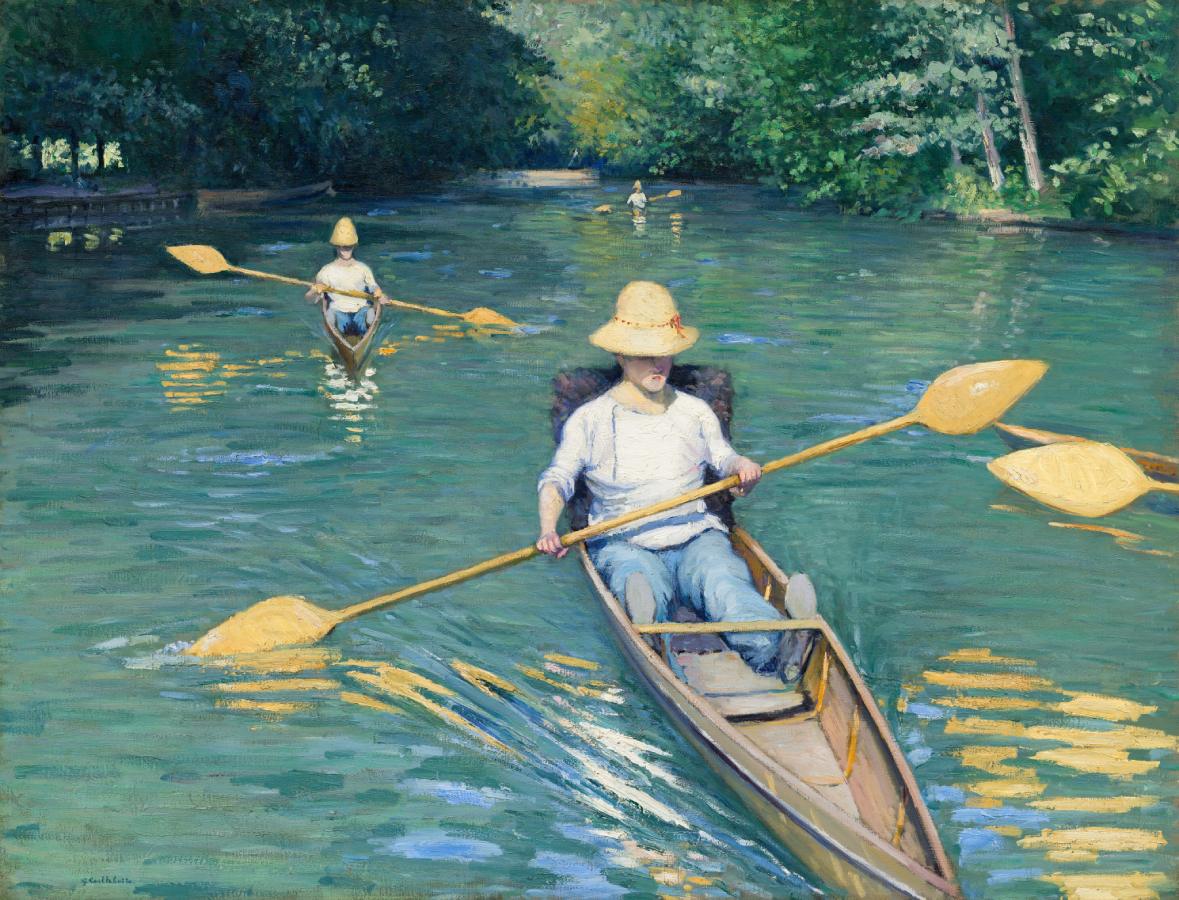Caillebotte, Gustave (1848-1894)
Skiffs
1877
Oil on canvas, 88.9 x 116.2 cm
National Gallery of Art, Washington
We look slightly down onto the surface of a river in which three narrow canoes, each paddled by a single person, are being rowed toward us in this horizontal landscape painting. The rowers wear white shirts rolled up to the elbows, light blue pants, and straw-yellow, wide-brimmed hats pulled down over the eyes. They sit in the bottom of their boats with legs extended and the handle of the double-bladed paddle straddling the boat over their laps. The canoe closest to us comes almost directly toward us, angled slightly to our right as it cuts through the surface of the river, its tip extending off the bottom edge of the canvas. The second canoe is a couple of boat lengths behind and to our left of the closest canoe. The third is small in the distance, near the horizon that comes three-quarters of the way up the composition. The back end of a fourth canoe and a single paddle extends into the scene from the right edge of the canvas. The butter-yellow paddles are reflected in the pale sage green and sky blue of the river’s surface. The river is lined on both sides with lush trees and vegetation, which fills the top quarter of the painting above the horizon.
Between 1877 and 1878, Gustave Caillebotte made a series of paintings focusing on swimmers, fishermen, rowers, and canoers at his family estate in Yerres. In Skiffs, which was exhibited at the fourth impressionist exhibition in 1879 under the name Pésissoires sur L’Yerres (Flat-Bottom Canoes on the Yerres), he adopted the short, broken brushstrokes of Monet and the bold palette of Renoir, but achieved a much different effect: as the rowers zig-zag across the canvas in a bold, diagonal rhythm, they convey a sense of movement, a progression of time and space that reveals Caillebotte’s interest in photography. An avid sailor and boat designer, Caillebotte—perhaps inspired by Japanese prints—adopted a dramatic viewpoint perched above the scene to emphasize the precariousness associated with the easily tipped, flat-bottomed skiffs. (NGA)
Compare:
 Caillebotte, Gustave (1848-1894)
Caillebotte, Gustave (1848-1894)
Skiff sur la rivière Yerres
c.1877
Norton Simon Museum, Pasadena
